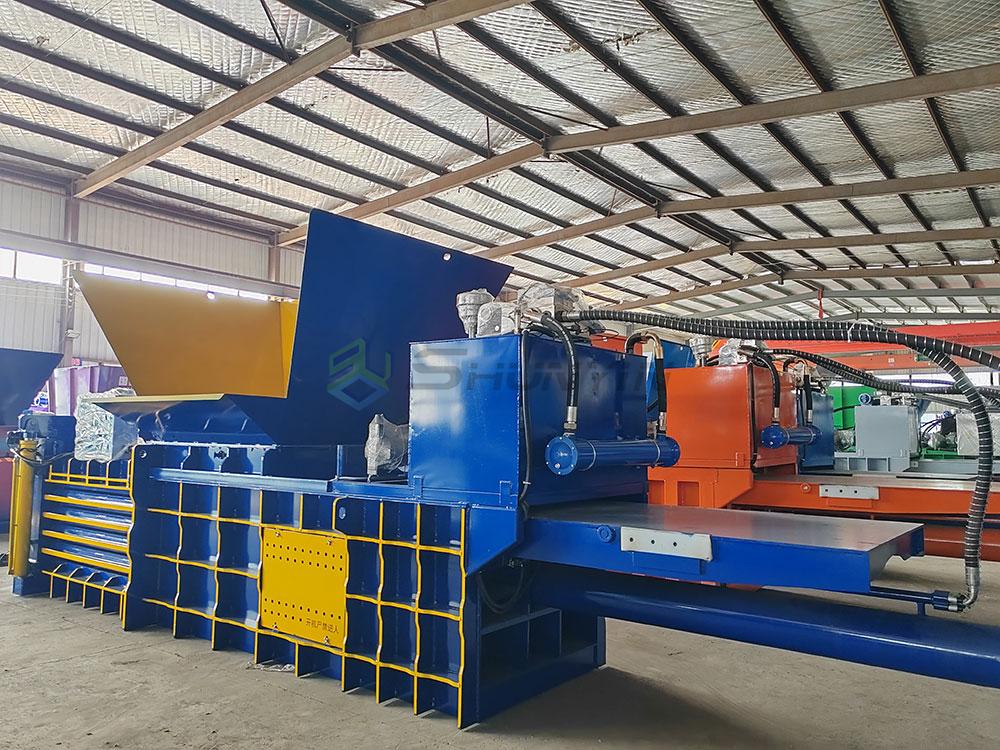Struggling with messy waste piles? Facing rising disposal costs? You’re not alone. Many factories lose money daily from inefficient recycling. Let’s solve this.
Choose horizontal balers for high-output operations like logistics centers handling tons of cardboard/plastic daily. Vertical balers fit space-limited SMEs processing smaller volumes. Prioritize throughput vs footprint needs first.

Confusion between baler types wastes time and resources. Keep reading to uncover why one choice can slash your operating costs by 30% or more.
What is the difference between vertical and horizontal balers?
Waste piles eating your floor space? Manual handling slowing production? Vertical and horizontal balers solve these differently. Know the core divide.
Horizontal balers automate feeding/pressing for continuous high-volume output (Ideal: large paper mills). Vertical balers offer semi/manual operation in compact footprints (Ideal: small retailers). Key differences: automation level, space use, and material suitability.

While both machines compress waste, their designs impact your workflow. Let’s examine critical operational factors:
Truth About Efficiency & Maintenance
- Labor costs: Horizontal = 1 operator handles 5 tons/hour. Vertical = Needs constant manual feeding
- Downtime risk: Vertical motors last 2X longer due to simpler mechanics
-
Repair expenses (Annual): Baler Type Avg. Maintenance Cost Common Failures Horizontal $3,000-$7,000 Hydraulic leaks, conveyor jams Vertical $800-$2,000 Switch malfunctions, chamber dirt
At ShunYin Machinery, we’ve seen factories overpay when mismatching balers to actual needs. One auto parts maker saved $17,000/year after switching from horizontal to vertical units – their real throughput was just 500kg/day! Always audit:
- Daily waste volume (weigh actual scraps for 3 days)
- Available clearance height (don’t forget overhead cranes)
- Transportation methods (forklift or hand trolley?)
Smart Facility Matching Strategy
Newer facilities blend both types creatively. Plastic recyclers use vertical balers for film scraps near production lines, feeding compacted blocks into horizontal balers later. This "dual-stage compression" cuts transport fuel costs by 40%. Struggling to plan your setup? WhatsApp us direct for layout design tips.
What does a vertical baler do?
Piles of foam scraps overflowing bins? Cardboard blocking fire exits? Vertical balers conquer these headaches efficiently. Picture a hydraulic press in a wardrobe-sized frame.
It compresses paper, plastic film, or foam inside vertical chambers via top-down pressing. Output: dense blocks up to 300kg easy to move/store. Perfect for stores, small workshops, or cafeterias with space limits.

Beyond basic compaction, modern vertical units unlock surprising value streams. Let’s dive deeper:
Hidden Profit Centers in Your Trash
Retail chains recover packaging costs through "bale resale programs":
1 ton retail compacts = 1 bale ($50 scrap value)
Average MetroMart store: creates 6-8 bales monthly
Annual recovery: $3,600 bottom-line boost
For food packagers:
- Crush PU foam trays → reduce 90% volume
- Store 1 month’s waste in one pallet space
- Cut weekly collection fees by $220
Why Automatic Tie-Systems Win
Earlier vertical balers needed manual wire threading – a safety hazard and time sink. Today’s smart models include:
++ Auto-binder arms (no worker near press zone)
++ Cycle counters for scrap accounting
++ Remote jam alerts via app
In May 2023, a Tokyo bakery prevented 8 hours downtime when their SY-400V model detected abnormal vibration and auto-shutdown. Our maintenance team diagnosed worn bearings via video call. Cost? $120 vs $3,500 for production halt! Need this reliability? WhatsApp us direct for buffer stock details.
Do I need a baler?
Noticing more dumpster pickups? Staff tripping over cardboard? Hidden waste costs often exceed baler investments. Time for diagnostics.
If generating over 200kg waste/week (≈100 large boxes), balers pay back within 18 months by cutting haulage/space costs. Must-owners: recycling plants, supermarkets, packaging lines with frequent volume peaks.

"People think balers are luxury items," says Vinod Patel, a rubber factory owner. His waste expenses told another story:
ROI Breakdown for Different Sectors
| Business Type | Pre-Baler Costs | Post-Baler Savings | Payback Period |
|---|---|---|---|
| Electronics OEM | $12,000/month (disposal + area rent) | $7,900 reduction | 4.2 months |
| Supermarket | $3,200/month (compactor rentals + labor) | $2,100 saved | 9.6 months |
| Textile Mill | $8,700/month (shredding fees + fines) | $6,500 eliminated | 13 months |
Critical Triggers for Immediate Action:
❶ Monthly disposal bills exceeding $1,500
❷ Paying overtime for waste sorting
❸ Fire department violations for clutter
❹ Recycling partners reject loose materials
At ShunYin, we offer setup financing where machine payments equal your current disposal costs for first year. Effectively zero-risk trial. One Vietnam particleboard maker gained $79,000/year reselling their bales. Get your free waste audit template: WhatsApp us direct.
What is a downstroke baler?
Fragile foam breaking during compression? Lightweight plastics refusing to bind? Downstroke balers solve fluff-material headaches.
This vertical variant crushes materials via upper-plate downward motion only, unlike dual-action presses. Create uniform bales from films or flakes without tearing. Ideal for lightweight fillers under 20kg/ft³ density.

Our Japanese clients call downstroke units "silent profit presses" – here’s why:
| Feature | Traditional Vertical Baler | Downstroke Baler | Benefit |
|---|---|---|---|
| Compression | Up/Down plunger | Top-down only | FOAM/PU avoids crumbling |
| Force control | Fixed pressure | Adjustable stages (10-80psi) | Container foam needs gentle start, hard finish |
| Feeding | Front hopper | Side + top openings | Accepts irregular car parts trimmings |
| Noise level | 89 dB (hearing protection needed) | 67 dB (conversational) | Fits office-adjacent areas |
The Classification Revolution
Downstrokes excel where materials vary hourly. Vietnam’s ReGreen Plastics processes 4 scrap streams simultaneously:
- HDPE flakes – high-pressure zone
- LDPE films – medium pressure
- PVC labels – shredder prefeed
- PET bottles – separate chamber
Their efficiency jumped 60% by eliminating resorting labor. Considering multicell solutions? WhatsApp us direct for co-design sessions with our engineers.
Conclusion
Balers solve waste costs differently: horizontals for volume, verticals for space, downstrokes for delicate scraps. Match type to throughput realities for fastest ROI.








